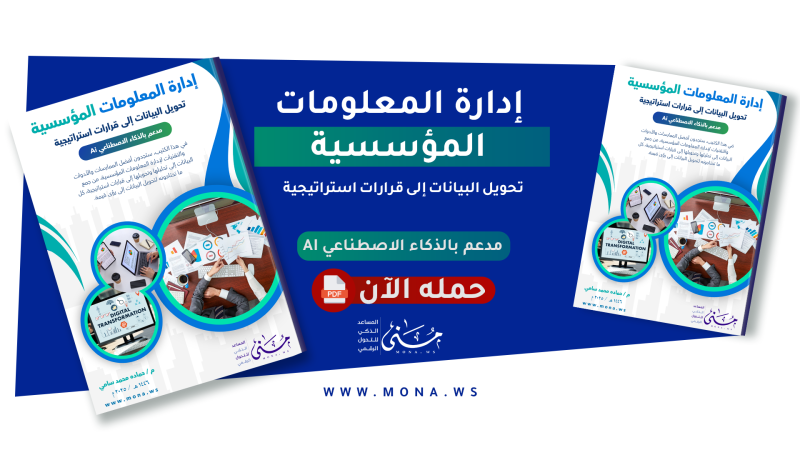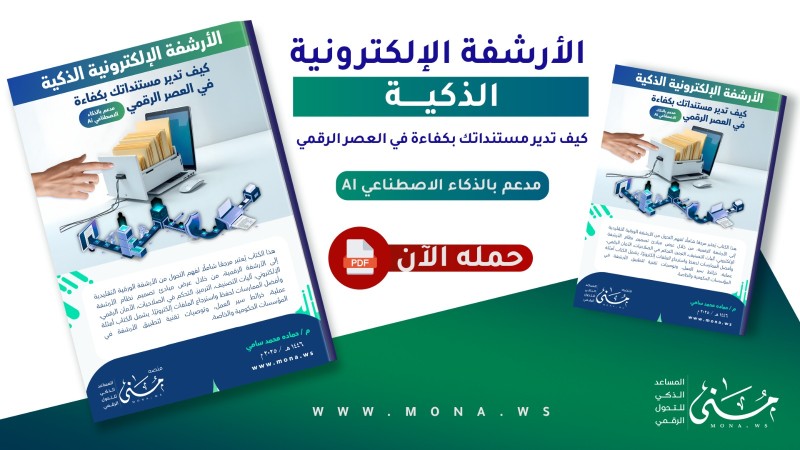Book: Electronic Archiving of Documents in the Sudanese National Archives - A Case Study
Author: Dr. Iqbal Muhammad Salih
In recent decades, the world has witnessed major transformations in the field of information management. One of the most prominent of these transformations has been the adoption of electronic archiving of documents as a modern alternative to traditional archives. This study, prepared by Dr. Iqbal Mohammed Saleh, aims to shed light on the experience of the Sudanese National Archives in implementing electronic archiving of documents, and to demonstrate the benefits and challenges associated with it.
The concept of electronic archiving of documents
Electronic document archiving is the process of converting paper documents into electronic form using modern computing technologies, with the goal of facilitating their storage and retrieval when needed. This process is a cornerstone of digital transformation in organizations, due to its efficiency in performance and rapid access to information. Using electronic document archiving reduces the need for large spaces and protects documents from damage or loss.
Motivations for switching to electronic archiving
Many factors prompted the Sudanese National Archives to adopt electronic archiving, most notably:
- Large pile of paper files.
- Difficulty of searching and retrieving in a paper system.
- Slow administrative performance and increased costs.
- Poor level of security and information protection.
- The need to keep pace with technological development.
The study showed that traditional institutions suffer from slow procedures and lost documents, while electronic archiving provides accurate, fast, and highly efficient solutions.
Stages of implementing electronic archiving of documents
The stages of electronic archiving at the House of Documents were divided into two main stages:
Planning phase:
- Study the quality and volume of documents.
- Defining digitization priorities.
- Choosing the right software and tools.
Implementation phase:
- Collect and classify documents.
- Scan it in high quality.
- Quality check and matching of digital copies with the original.
- Entering and storing data in structured databases.
Benefits of electronic archiving of documents
The study showed that the implementation of electronic archiving in the Sudanese National Archives resulted in significant benefits, including:
- Accelerate job performance and reduce the time required to complete transactions.
- Reduce costs associated with paper archiving.
- Increase the level of document protection.
- Ability to retrieve information accurately.
- Facilitate data sharing between different departments and entities.
- Reducing reliance on paper and promoting the concept of a “paperless office.”
Challenges faced by the application
Despite the benefits, the National Archives faced several challenges in implementing electronic archiving, including:
- Resistance to change from some employees accustomed to traditional archiving.
- Weak technological infrastructure in some departments.
- Lack of trained personnel in digital document management.
- Constant need for updating and maintenance.
However, these challenges did not deter the concerned authority from continuing with the electronic document archiving project, given its significant positive impact.
Electronic archiving systems used
The study reviewed several systems used in electronic document archiving, including:
Smart DocIt is a flexible archiving system that relies on scanning and document classification using a tree organizational structure.
Other local and imported systems support accurate and intelligent classification, preservation, and indexing processes.
The importance of selecting a system based on the organization's needs and ease of use for all employees was emphasized.
Electronic archiving and information security
One of the most important advantages of electronic archiving is that it enhances information security by:
- Set access permissions for users.
- Protect digital copies from damage or loss.
- Create permanent backups of important documents.
- Reducing the possibility of tampering or forgery of documents.
Study recommendations
The study concluded with a set of recommendations for developing electronic archiving at the Sudanese National Archives:
- Establish partnerships with regional and international entities to benefit from their expertise.
- Training and qualifying employees to use modern systems.
- Developing the technical infrastructure to support digital archiving.
- Continuously update systems to keep pace with information storage and retrieval requirements.
She also stressed that the success of implementing electronic archiving requires the integration of technical, administrative and human aspects.
The Sudanese National Archives' experience with electronic archiving of documents is a significant example of the digital transformation in document management. The institution has overcome numerous obstacles to achieve a qualitative leap in information preservation and management. There is no doubt that electronic archiving of documents will remain a cornerstone for any institution aspiring to develop and improve administrative and information performance.
You can download the book "Electronic Archiving of Documents in the Sudanese National Archives - A Case Study" directly from here.
 كتاب: الأرشفة الإلكترونية للوثائق في دار الوثائق القومية السودانية – دراسة حالة
كتاب: الأرشفة الإلكترونية للوثائق في دار الوثائق القومية السودانية – دراسة حالة






Comments
Add New Comment